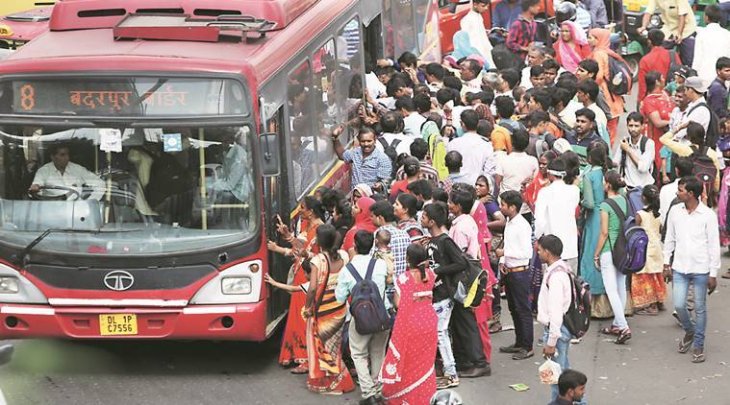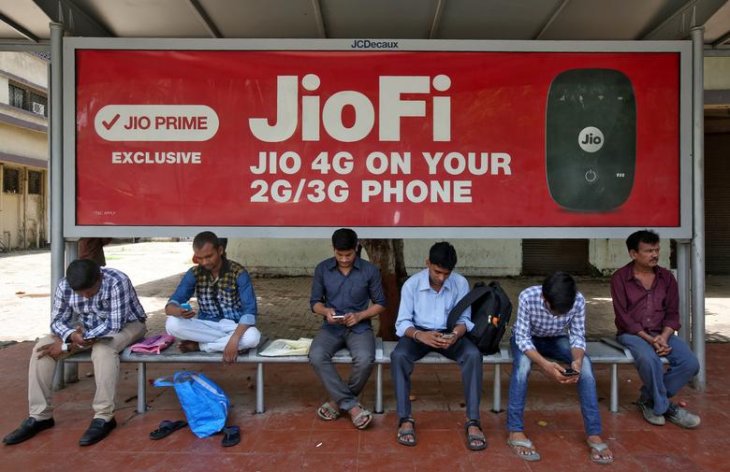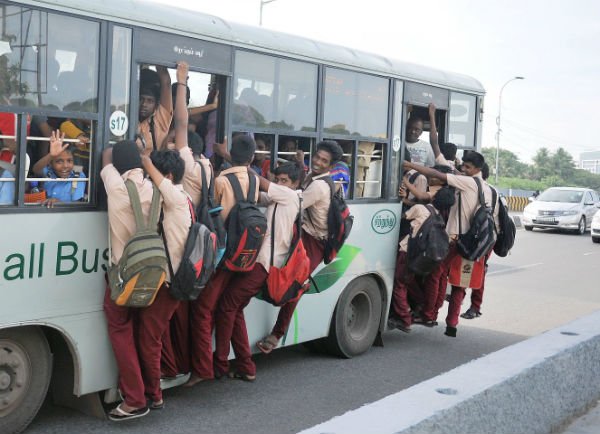Why Is Your Bus Always Late?
Dhir Acharya - Dec 18, 2019

Have you ever been so annoyed that you're in a hurry but you have to wait forever because your bus is late? This is called bus bunching.
- A Math Formula Tells Us How Long Everything Will Live
- Shakuntala Devi Awarded Guinness World Records’ Fastest Human Computation Certificate After 40 Years
- Murderer Taught Himself Higher Math In Prison And Solved A Age-Old Math Problem
As the world population is rising continuously while the roads are not getting wider quickly, more people are switching to public transport like buses because they are cheaper. And as more people are traveling by bus, bus systems’ coverage is getting broader and broader, helping more people get to more places. However, buses don’t always give you the convenience you need, especially with bus bunching.

What is bus bunching?
If you have taken the bus long enough, you will surely notice that there are a lot of times when you have to wait forever for your bus and suddenly three of them show up at the same time.
This phenomenon, called “bus bunching,” is more common than you think and it happens around the world wherever there is a bus system, which is something people have been working to address for decades.
Bus bunching raises the average time riders have to wait for their bus as well as the variability in their waiting time. Furthermore, bus bunching reduces the reliability of bus systems since it makes buses get off their schedules.
To study bus transit systems’ behavior and to figure out the reason behind bus bunching, researchers used mathematical models. Mathematics also suggests that by combining bus-tracking tech with simple control algorithms, we can improve this situation.

What causes bus bunching?
Based on Math, we have an explanation for you. This phenomenon happens due to the fact that bus routes are not stable by nature. If a bus is on schedule, things appear t be fine, it travels from one stop to another and passengers get in. But if it gets behind schedule just once, it can barely get back on track. It will get further behind until the next bus catches up to it.
It’s the same for a bus that’s ahead of its schedule, it keeps getting earlier until it catches up to the one before it on the route.
The cause of this can be identified in equations describing the way buses move along their route. There is a relation between the time a bus spends serving riders and bus headway, aka the amount of time between the arrivals of two consecutive buses.
When a bus is late, its headway rises and it has to serve more riders at the next stop. However, as there are more passengers to serve, the bus has to spend more time at the stop, which causes them to run even further behind schedule.
The opposite thing occurs with an early bus and the cycle goes on until multiple buses catch up to each other, and boom, we have bus bunching.

What are the possible measures?
For late buses, we can instruct them the skip certain stops if there are no passengers getting off; or we can put a limit on how many people can get in at each stop. These two ways help late buses avoid spending extra time at stops, allowing them to catch up with the schedule. But they can also cause damage to users in case they can’t get on the bus.
Another measure is adding more time to a bus schedule, called slack, accommodating the variability in bus travel time. We can instruct early buses to linger at chosen stops until their scheduled time for departure. But this way doesn’t help late buses catch up and take riders more time to get to their destinations.
Another method is taking advantage of technology. Transit agencies can track the real-time location of buses, offering tailored feedback to bus drivers. With this strategy, consecutive buses that are too close to each other are instructed to increase the headway, while buses that are too far from each other are instructed to get closer. For example, transit agencies can tell a bus to hold longer at a stop while telling another to go faster on a route.
There are algorithms developed for agencies to give buses instructions to prevent bus bunching. Dispatchers at transit agencies can monitor bus systems and instruct drivers via on-board computers that automatically calculate the exact move drivers should do to avoid bunching.
Featured Stories

Features - Jul 01, 2025
What Are The Fastest Passenger Vehicles Ever Created?

Features - Jun 25, 2025
Japan Hydrogen Breakthrough: Scientists Crack the Clean Energy Code with...

ICT News - Jun 25, 2025
AI Intimidation Tactics: CEOs Turn Flawed Technology Into Employee Fear Machine

Review - Jun 25, 2025
Windows 11 Problems: Is Microsoft's "Best" OS Actually Getting Worse?

Features - Jun 22, 2025
Telegram Founder Pavel Durov Plans to Split $14 Billion Fortune Among 106 Children

ICT News - Jun 22, 2025
Neuralink Telepathy Chip Enables Quadriplegic Rob Greiner to Control Games with...

Features - Jun 21, 2025
This Over $100 Bottle Has Nothing But Fresh Air Inside

Features - Jun 18, 2025
Best Mobile VPN Apps for Gaming 2025: Complete Guide

Features - Jun 18, 2025
A Math Formula Tells Us How Long Everything Will Live

Features - Jun 16, 2025
Comments
Sort by Newest | Popular